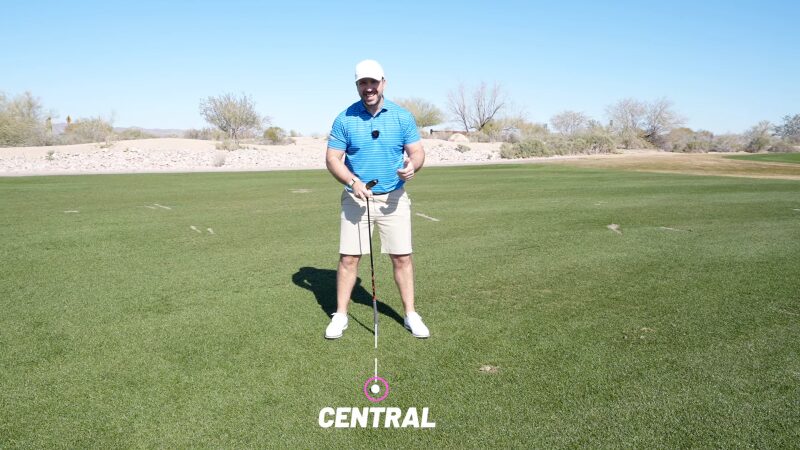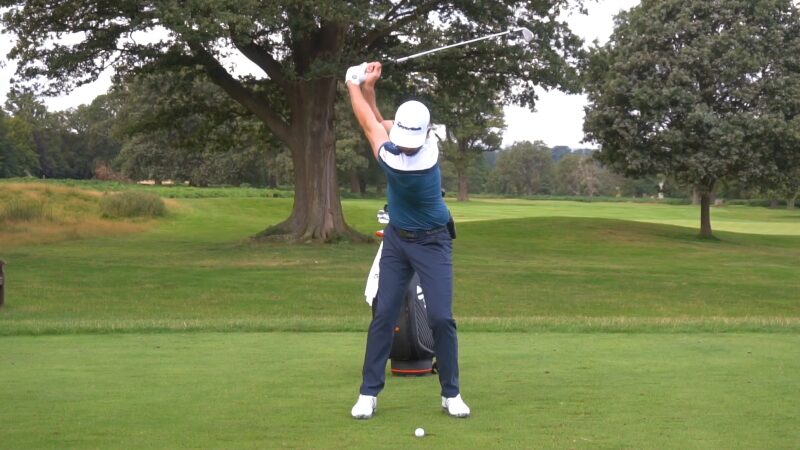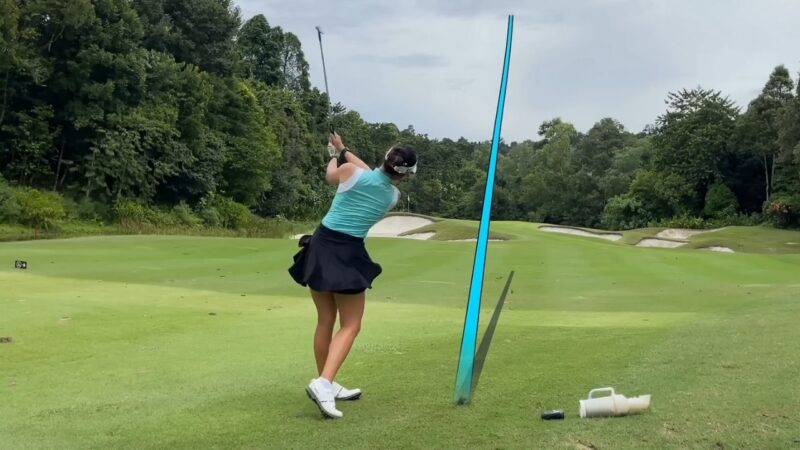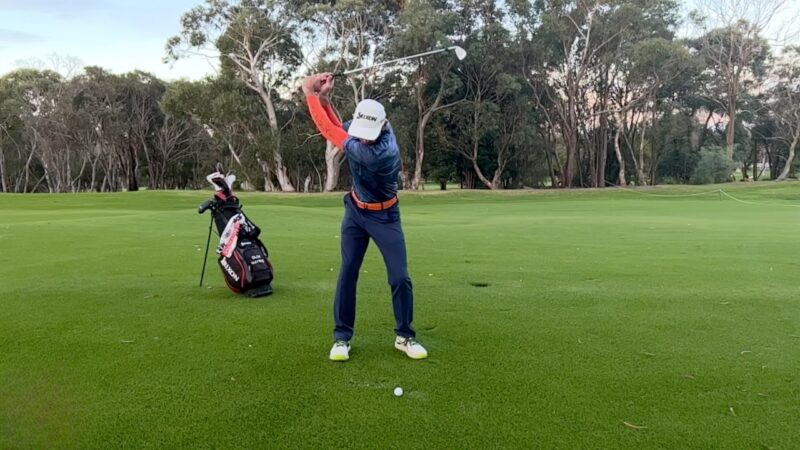Achieving a pure iron shot in golf provides an unmatched sense of satisfaction.
The moment when you make a solid connection with the ball, feeling it compress and leap off the clubface, can result in a shot that lands precisely where you aimed on the green.
Wouldn’t it be great to experience this consistently?
By mastering the techniques for hitting pure iron shots, you can enjoy that smooth, buttery sensation more frequently and elevate your game to new heights.
Key Takeaways
- You must strike the ball on your downswing to achieve the desired ball flight and distance.
- The position of your lead wrist should be slightly flexed at impact to hit a pure shot.
- Consistency in your setup will enhance your balance and stability, leading to more accurate strikes.
- Utilize ground forces by pushing off the ground throughout your swing to increase power and the centeredness of your strikes.
8 Tips for Hitting Pure Iron Shots
1. Perfect Your Ball Placement

Correct ball position in your stance is crucial for achieving clean, powerful iron shots. If the ball is too far back, you might hit behind it and leave the clubface open. Conversely, if it’s too far forward, your shots could be thin, weak, or hook to the left.
For mid-irons like 8, 7, and 6, place the ball in the center of your stance. Shift it slightly forward for longer irons (4 and 5) but keep it behind your lead heel. For shorter irons and wedges, move the ball slightly back from the center.
Maintaining consistent ball placement will help you make more reliable contact.
2. Perfect Your Wrist Angle
The position of your lead wrist is critical. At impact, your wrist should be flexed or bowed. A flat wrist can result in good but less powerful shots, while a cupped wrist leads to shots that veer right with too much loft and less power.
Focus on not increasing wrist extension from setup to the top of your backswing. On the downswing, decrease the wrist extension as early as possible to help square the clubface. Using tools like HackMotion can help monitor and correct your wrist positions at various swing phases.
3. Incorporate Lag in Your Swing
Lag adds effortless power to your swing. Achieve this by practicing drills such as holding a towel between your hands. Grip the top of the towel like a club and let your trail hand separate by about a foot. Swing back and let go with your trail hand at the top, then use your lead hand to swing through.
This drill helps instill the sensation of lag. Practice daily for better results.
4. Monitor Your Weight Distribution at Setup
Proper weight distribution is key for balance and stability. Many golfers unknowingly put more weight on their toes or heels, affecting their stability. For iron shots, distribute weight evenly on both feet. With shorter irons, a 60/40 split favoring the lead side can be beneficial.
Your body weight should feel evenly distributed along the inside of your feet, pressing firmly into the ground to maximize ground forces. This helps ensure you hit through the ball effectively.
5. Take the Divot After Impact

A pure iron shot involves taking a divot after striking the ball. If the divot happens before, it’s a sign of an imperfect strike.
Practice by placing a loose tee in front of the ball and aiming to hit it after striking the ball. This reinforces hitting down and through the ball. Start with shorter shots and work up to full swings.
6. Keep the Clubface Square at the Address
A square clubface at setup is essential for pure iron shots. Misalignment can lead to poor results even before the club is swung. Regularly check your clubface alignment using a straight edge at the driving range to ensure it’s square.
Tools like HackMotion can help monitor and maintain correct wrist angles at setup, aiding you in consistently achieving a square setup position.
7. Embrace Your Natural Shot Shape

Work with your natural shot shape rather than against it. If you naturally draw or fade the ball, incorporate that into your strategy. Fighting your natural tendencies can lead to inconsistency and lack of confidence.
If your natural shape is extreme, like a slice or hook, work on straightening it out. Understand that hitting pure irons involves both physical and mental components, so trust and confidence are key.
8. Control the Speed of Your Backswing
Controlling your backswing speed can improve your swing’s overall tempo. A fast backswing can lead to mishits and inconsistency.
By slowing down your backswing, you maintain better wrist angles, keep on plane, and allow for proper weight transfer. This doesn’t mean losing power or distance; rather, a controlled backswing leads to more consistent shots.
Referring to a golf club distance chart can help you understand the potential distances of your controlled shots.
Bottom Line

Experiencing the satisfaction of a flawlessly struck iron shot is unparalleled. The ball launches smoothly, seeming instinctual in its path. By honing these techniques and using golf irons tailored to your playstyle, you can consistently achieve pure iron shots.
Your next step is straightforward: grab your HackMotion and get to the range. Practicing diligently will reveal remarkable improvements in your game.

